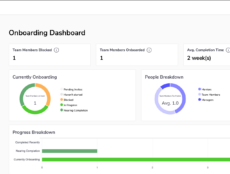
Articles
Editor’s Picks
Why Is Live Interactive Video Streaming So Rare Among MOOCs and LMSs?
By Henry Kronk
October 13, 2017
ELearning is clearly here to stay. As early as 2013, The Wall Street Journal found that, of people seeking higher education in the U.S., only 29% were traditional college students, e.g. 18-22-year-old high school graduates. A much bigger percentage was made up by people over 25 with a full time job and/or a family. In some cases, these lifelong learners will be able to attend class in person, but for most, online courses and other eLearning programs are far more accessible, less expensive, and easier to fit into a demanding schedule.
But that does not mean online degrees have replaced the lecture hall. The differences and challenges that have yet to be overcome could fill a long list, but one of the most glaring issues with taking a class online is the impersonal nature of most courses and the lack of human contact.
According to eLearning expert Judith Boettcher, “we learn as social beings in a social context.” In other words, a lack of person-to-person contact doesn’t just make eLearning less engaging; it affects how we learn.
Live, Interactive Video Streaming
But it’s not as if we do not have the technology to overcome this. Live interactive video streaming, specifically, can allow students to respond to their instructor and address their peers much as they would do in a traditional classroom setting.
 It’s possible—in a course with scheduled lectures—for students to tune in, listen to a lecture in real time, ask questions, and participate in discussion from a remote location.
It’s possible—in a course with scheduled lectures—for students to tune in, listen to a lecture in real time, ask questions, and participate in discussion from a remote location.
Likewise, for courses with a less-rigid structure, students should be able to create video responses to recorded material, set up times for informal discussion, and participate in a non-text medium.
But why then, does most online education occur in basic, one-way pre-recorded lectures?
It’s true, many learning management systems (LMS) can integrate with live interactive video streaming services, but these generally cost a monthly fee, require additional resources to set up, and will be more taxing on institution servers.
With MOOCs, it’s even worse. Most are made up almost exclusively by pre-recorded lectures. The only real-time contact students may receive—with instructor or fellow students—might be through a class forum. There are, of course, some notable exceptions to the rule.
Streaming and eLearning Success
With this in mind, it might not be a coincidence that, with both LMSs and MOOCs or online courses, some of the most successful and quickly growing companies are those that prioritize live or interactive video.
Instructure, for example, offers LMSs for various kinds of institutions. They created an impressive video sharing platform, Arc, in 2016.
“Unlike traditional video platforms, Arc was designed for students and instructors in both K–12 and higher education,” said Jared Stein, vice president of Canvas higher education product and strategy at Instructure. “Its innovative interface lets learners and instructors engage and interact with video content in real time by commenting directly on the video timeline.”
“Through this commenting feature, students can learn from each other’s insights as well as from the instructor’s direction and feedback, providing a rich community for students to learn from one another.”
The K-12 and higher education LMS market has long been dominated by Blackboard, but in 2016, TechCrunch reported that Canvas was acquiring 80% of new LMS business. As old contracts come up for renewal, furthermore, many schools have been choosing Canvas over their old LMS provider.
The MOOC universe also has a singular live, interactive video champion.
The Shaw Academy is not a MOOC per se, but their numbers could well be considered massive and growing. Since they began in 2013, they have taught over 4,000,000 students. At the moment, they’re seeing 250,000 new students every month.
Their online courses, unlike MOOCs, take place at a set time on a regular basis every week. At this time, students can stream in to watch the lecture. Shaw’s platform allows the instructor, furthermore, to see and hear the students as well. They can interrupt the lecture to ask a question, and all classes place heavy emphasis on discussion and student participation.
The company may not have more users than MOOC giants like Coursera, edX, and Udacity, but that should not be seen a pure reflection of their success. The Irish company is currently valued at over £83m, slightly more than Udacity, the most successful MOOC provider from a financial perspective.
They’ve had an average year on year growth of over 300% since their inception. Last year, the Shaw Academy was taking in so many new users that it had to build a new platform to accommodate demand. Their current crowdfunding campaign is trying to raise enough capital for them to scale even bigger.
It’s likely that, one day, live interactive video streaming will be an industry standard, and the quality of eLearning programs will be significantly higher than today. For now, it seems like one avenue to success is creating an easy-to-use and easy-to-integrate video streaming feature.









i hate this it keeps me behind in go math